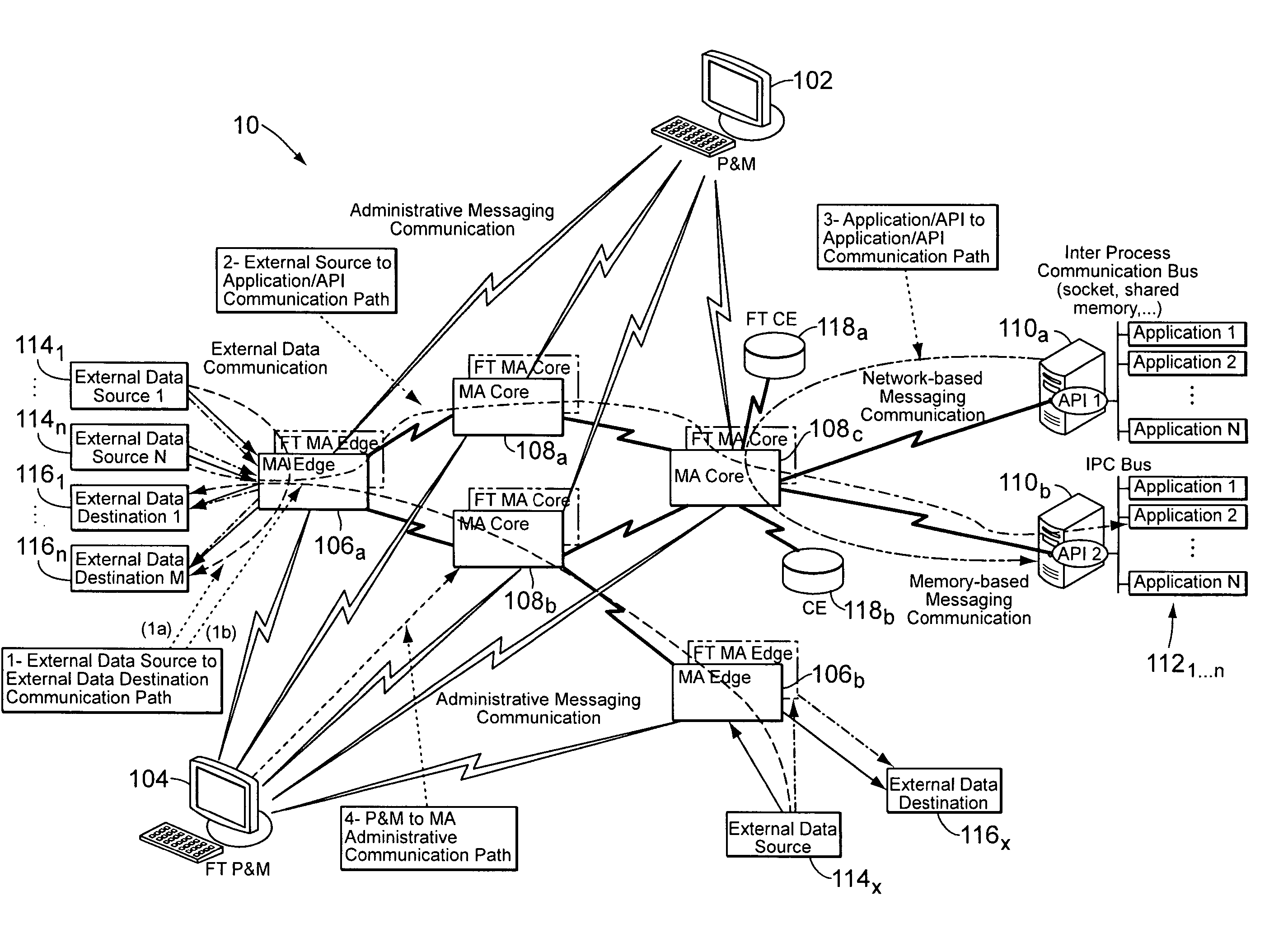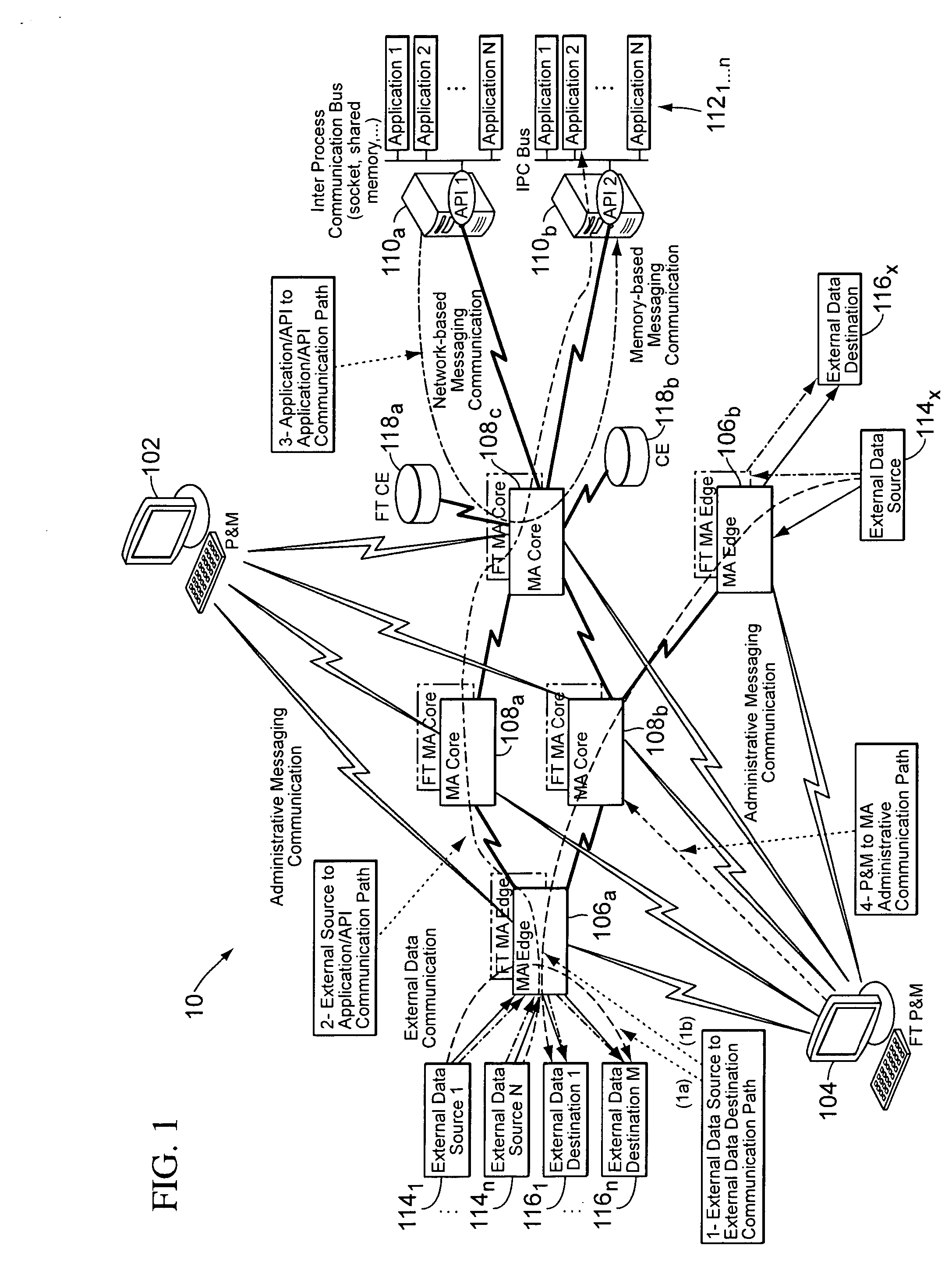Caching engine in a messaging system
a messaging system and cache engine technology, applied in the field of data messaging, can solve the problems of scalability and operational problems, messaging system architecture produces latency, and create performance bottlenecks
- Summary
- Abstract
- Description
- Claims
- Application Information
AI Technical Summary
Benefits of technology
Problems solved by technology
Method used
Image
Examples
Embodiment Construction
[0032] Before outlining the details of various embodiments in accordance with aspects and principles of the present invention the following is a brief explanation of some terms that may be used throughout this description. It is noted that this explanation is intended to merely clarify and give the reader an understanding of how such terms might be used, but without limiting these terms to the context in which they are used and without limiting the scope of the claims thereby.
[0033] The term “middleware” is used in the computer industry as a general term for any programming that mediates between two separate and often already existing programs. Typically, middleware programs provide messaging services so that different applications can communicate. The systematic tying together of disparate applications, often through the use of middleware, is known as enterprise application integration (EAI). In this context, however, “middleware” can be a broader term used in the context of messa...
PUM
 Login to View More
Login to View More Abstract
Description
Claims
Application Information
 Login to View More
Login to View More - R&D
- Intellectual Property
- Life Sciences
- Materials
- Tech Scout
- Unparalleled Data Quality
- Higher Quality Content
- 60% Fewer Hallucinations
Browse by: Latest US Patents, China's latest patents, Technical Efficacy Thesaurus, Application Domain, Technology Topic, Popular Technical Reports.
© 2025 PatSnap. All rights reserved.Legal|Privacy policy|Modern Slavery Act Transparency Statement|Sitemap|About US| Contact US: help@patsnap.com



